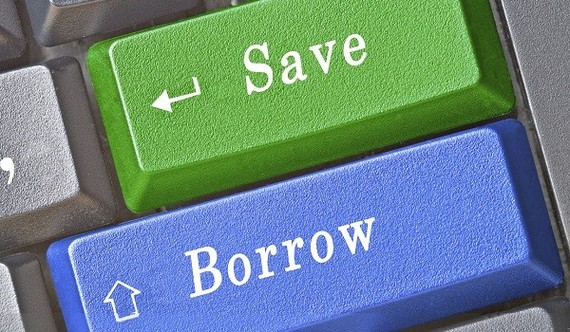You are struggling just to pay your monthly bills, not to mention dealing with the occasional car breakdown, home maintenance item, or unexpected medical bill. You have had to resort to high-interest short-term payday loans to fill the gap, which puts you even further in debt. How can you even think about saving money in these circumstances?
It takes a savings mindset and strong discipline to establish a regular savings habit even in difficult times. For those of us who need a bit more help, the financial industry has launched a pilot program to assist struggling consumers. “Borrow and Save” programs may sound like an oxymoron, but in reality, they can provide a transitional path to help families get out of perpetual debt and into a regular savings habit.
The programs are fairly simple in concept: you borrow a certain amount of money and a portion of that loan is set aside in a savings account. When the loan is paid off, the borrower gains access to the savings account. At that point, the borrower can do what they wish with the money in the savings account -- but the intent is to convince people to keep that savings account as an emergency fund, and eventually add to it when they are able.
With an emergency fund in hand, it is easier to absorb the occasional unexpected expense. Unfortunately, many Americans lack such a fund. The Pew Charitable trusts have reported that 41% of households have insufficient savings to cover a $2,000 expense. The issue is as much mental as it is financial -- Pew also reports that 10% of families with annual incomes greater than $100,000 had no savings at all.
Borrow and Save programs were initially used by credit unions as a way to encourage saving among lower and middle-income customers while simultaneously preventing them from getting trapped in payday loan cycles that can charge interest rates over 400%. The Filene Research Institute expanded this into a broader pilot program across twelve credit unions with the help of a grant from the Ford Foundation.
Within this program, credit unions set up their own ranges for loan amounts, savings set-asides, and interest rates based on the situation in their market. Loan amounts ranged from $200 to $2,000 while the amount set aside in the savings account ranged anywhere from 5% to 50% of the loan balance. Interest rates ranged from 6% to 28% -- high for a typical loan, but a bargain compared to the average payday loan. Half of the program participants charged no fees and the highest fee was $30.
Some credit unions with greater experience with Borrow and Save offer higher loan amounts that can serve as bridge loans. By establishing a regular payment history on an intermediate-sized loan, consumers can build a positive credit history and create the savings allowing them to qualify for more substantial, lower-interest loans.
In general, the program was a success. $3 million was loaned out through the eighteen-month program to 3,100 customers. The average loan amount was $944 with an average savings of $290 per borrower and the default rate was under 2%. Three-quarters of the twelve credit unions completing the pilot program indicated that they would continue offering Borrow and Save loan programs.
It is too early to tell whether the long-term goal will be met -- that those who established savings accounts will maintain them and continue to add to them -- but at least the first hurdle has been successfully passed.
If you find the program of interest, check with your nearby credit union to see if they offer Borrow and Save loans. If not, check out other credit unions for which you may qualify. Take the first step in breaking a debt cycle and seek help that allows you to establish a savings habit at the same time.
If you are interested in a personal loan, visit our curated list of top lenders.
This article was provided by our partners at moneytips.com
Cutting The High Price Of Payday Loans (Infographic)
Auto Title Loans101
How Much Do We Trust Big Banks? (Infographic)
Photo ©iStock.com/vaeenma
